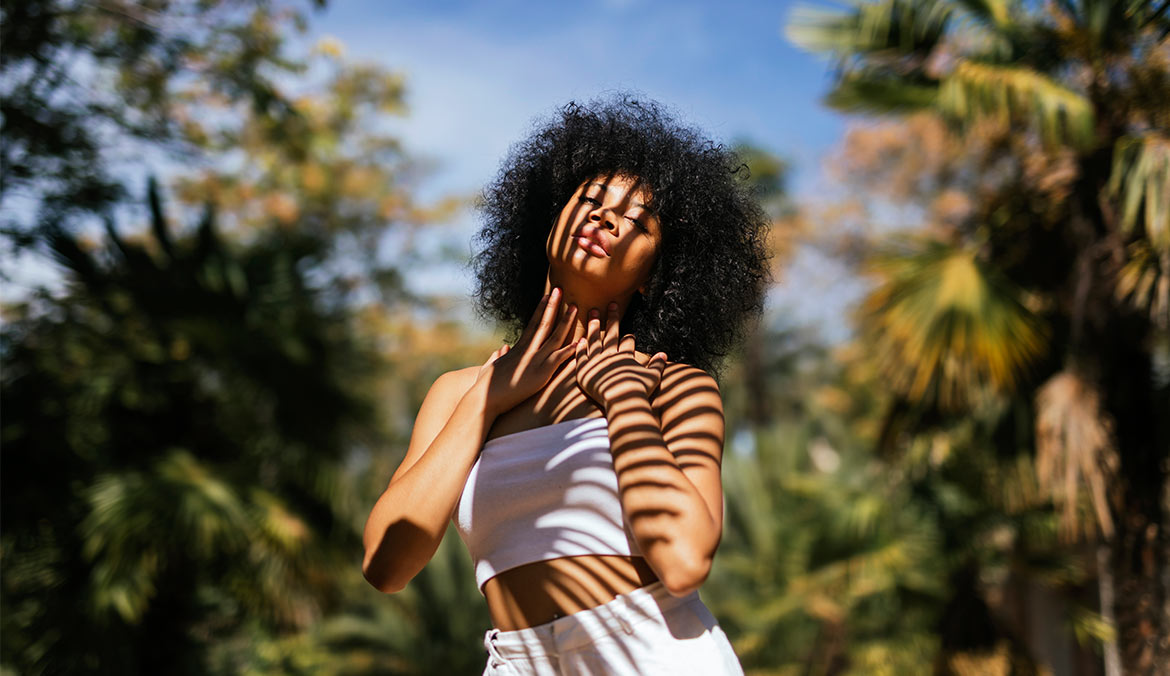“Skin cancer is the most common form of cancer and it is something that is so easily prevented,” says Ivy Lee, MD, a certified dermatologist in Pasadena, California. “Current estimates are that one in five Americans will develop skin cancer in their lifetime and nearly 20 Americans die from melanoma every day. Unprotected exposure to the sun’s ultraviolet radiation is the most preventable risk factor for skin cancer, making it critical. protecting your skin outdoors “.
Protecting your skin is relatively simple, as long as you understand the basics. Here are five things Dr. Lee would like to know about sun damage.
5 things a dermatologist wants you to know about sun damage
1. There is no such thing as a “safe tan”
“A lot of patients tell me, ‘Well, I’m not really burning.’ “I’re just tanning,” but there is no such thing as a “safe tan,” says Dr. Lee. The damage from all this sun exposure is cumulative, which means it builds up over time and is what leads to the signs of premature aging we see with wrinkles, dark spots and “Dermal skin. It is also what leads to skin cancer.”
2. Anyone can get skin cancer, regardless of skin color
While people with lighter skin tones are more likely to get skin cancer, this does not mean that people with darker skin tones are immune. “People with darker skin tones can still get skin cancer,” says Dr. Lee. “And often, when we develop skin cancer, it gets caught at a later stage and we are less likely to survive or have a good outcome with skin cancer.” Therefore, regardless of your skin, pay close attention to how you protect it and make sure to check your skin once a year.
3. The use of a broad spectrum sunscreen with at least SPF 30 is the basic line
Not all sunscreens are created equal. Dr. Lee says you should always look for a broad-spectrum sunscreen, “which means it blocks UVB and UVA rays, which are the two main types of ultraviolet radiation that reach the Earth’s surface,” she says. In addition, you want to make sure it has a sun protection factor (SPF) of at least 30. “We know that a SPF 30 rating usually means it blocks about 97 percent of UVB rays,” says Dr. Lee.
4. You need to apply (and reapply) enough sunscreen
“The reality is that most of us do not apply enough sunscreen and then most of us do not reapply as often as we should,” says Dr. Lee. If you do not use the right amount of product, you are not getting as much protection as you think — if you apply only half of SPF 30 than you need, you are actually only getting SPF 15 protection. To cover your body, use the amount of product you will need for fill a shotgun and for your face, make a peace sign and draw product lines over two of your fingers.
No matter how much sunscreen you apply in the morning, you should also repeat it regularly. “We want to make sure people reapply, usually every two to four hours, depending on your outdoor exposure,” says Dr. Lee. It is recommended to apply again more often if you sweat, in and out of the water or near reflective surfaces such as snow or sand.
5. Clothes that protect the sun can make a big difference
If you spend a lot of time outdoors, you can benefit from investing in sunscreen. “These garments are protective because they are either physically protective – long sleeves, long shirts, brimmed hats – or because they are made from UPF rated fabrics,” says Dr Lee. “This ‘UV protection category’ is a standard measure of how much UV radiation the fabric itself filters, so you will often see UPF scores of 30 or 50 on some clothes.” So, double your standard sunscreen with a hat and a sunscreen, and you will be ready to safely enjoy the coming summer.
Oh Hello! You look like someone who loves free workouts, discounts on modern wellness brands and exclusive Well + Good content. Join Well +, our online wellness community and unlock your “reward” right away.
Our authors independently select these products. Making a purchase through our links can earn a Well + Good commission.



